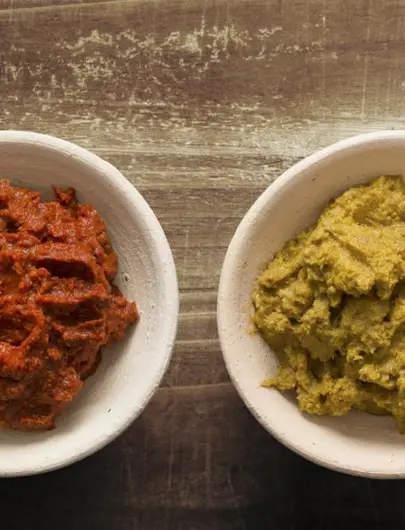Think you’re making a healthy meal with a curry base from the supermarket? Think again.
Many commercial varieties are loaded with undesirable, unnatural ingredients that you wouldn’t use yourself were you to make your own curry from scratch.
Here are five common ingredients that manufacturers sneak into their curry bases - and some wholesome alternatives you can use instead. By Nutritionist and GoodnessMe Box Health Editor Melissa Fine.
1) MSG
Made up of sodium and the amino acid ‘glutamate’ (amino acids are the building blocks of protein), MSG (Monosodium Glutamate) is also known as ‘flavour enhancer 621’.
A flavour enhancer indeed, MSG is what makes highly processed foods taste super umami. The fifth taste element, umami refers to that hard-to-describe, almost meaty, protein-like flavour you get in savoury snacks and condiments.
Is it safe? Although there have been anecdotal reports of MSG hypersensitivity reactions (such as headaches and muscle stiffness), there is no evidence to suggest that MSG causes severe allergic reactions.
Still, my concern with MSG is
- It’s synthetic, and
- It can encourage us to eat more than we really need because it’s so moreish,which might explain why you’re more likely to go for a second and third serve when you order takeaway. You’ll often find MSG in savoury condiments like soy sauce, wasabi and Japanese mayonnaise.
Besides, who needs MSG when you can enhance the flavour of your curry with real food? Take Love My Earth’s Organic Butter Chicken Blend - this contains nothing but herbs and spices like citrusy coriander, zingy ginger, sweet and woody cinnamon, and chilli for some heat and spice. The fresh garlic, ginger, onion and coconut cream that you cook this blend with will enhance the flavour even further. Check out Love My Earth’s awesome recipe for Butter Chicken.
2) Sugar
Take a popular, pre-made base for a chicken korma; after water, sugar is the main ingredient, when really herbs and spices along with yoghurt and cream should be… A curry should not have the equivalent amount of sugar to a dessert. Go for Love My Earth’s Organic Shahi Korma powder instead and make this sugar free Cashew Korma.
3) Vegetable Oil
Indian curries are traditionally cooked in butter or ghee (clarified butter). Both are minimally processed and have a high smoke point, meaning their structure won’t undergo undesirable changes under high temperatures.
Your typical commercial curry sauce however will likely contain vegetable oils (like sunflower oil) which are highly reactive at high temperatures, potentially undergoing oxidation. This is something we don’t want going on in our bodies, which explains the antioxidant craze. Skip the pre-made curry sauce and go for a pure curry powder instead so you can make it like the real deal and without any rancid oils.
4) Fish
Yep, the colour in your curry might be thanks to a fish derivative (note to vegetarians) – and the natural flavours can be derived from wheat. What about natural colours and flavours from herbs or spice instead? Turmeric for example imparts a lovely golden colour and spicy flavour into a curry.
5) Preservatives
Sulphur dioxide is a common one, and one which asthmatics may react to. Salt also serves as a preservative, bumping up the sodium content of commercial curry powders and sauces. For a preservative free curry, go for a curry powder made with nothing but herbs and spices, and ideally no added salt (like Love My Earth’s); Then add the rest of the ingredients yourself when they’re at the freshest, rather than buying them bottled – No additives required.
Find out more about Love My Earth: www.lovemyearth.net

